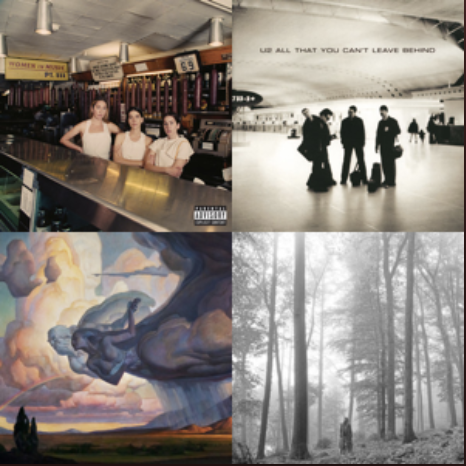…the tintinnabulation that so musically wells
From the bells, bells, bells, bells,
Bells, bells, bells—
From the jingling and the tinkling of the bells.
—Poe
One perfect summer, when the sun stood clear over golden-gray towers, domes, and spires, I sat each evening at my desk in Lincoln College, Oxford. After a run round Christ Church meadows, then dinner “in hall,” I tackled my studies of Shakespeare or C. S. Lewis with their historical presence nearly tangible, just behind my right elbow. Almost as soon as I began, regular as the works of the clock on Carfax Tower, the bells began to chime. For an hour, the changes rang out in cacophonous clangor: rhythmic, clashing, sweet, infuriating, exhilarating, and apparently random. It drove my colleagues wild; they, like Poe, hated the metallic voices, absence of melody, and persistent stasis of crashing tongues. How they clang and clash and roar! I lived by it, loved it, hated the empty-gut vacuum of silence when they ended, thrilled each time they started again. That was the sound of time, the past, academia, tradition, religion: everything I venerate. Reason and reverence blended, shouting their clapper-songs, making a joyful noise. Faith and learning, past and present, a racket of the mind, a din of the soul.
Three years later, having learned much about the mathematical art of change ringing from that inimitable source, The Nine Tailors by Dorothy L. Sayers, those bells have added associations. Upon first hearing about the numerical patterns this ringing follows, I thought of the interweavings of English Country Dance:
Double forward and back
Cast off and lead up
Face down
Double down and back
Take hands four
Repeat last with 2nd & 4th. etc.
Compare these Elizabethan complications with, for instance, Kent Treble Bob, the course of bell-ringing that features so prominently in Sayers’s book. Here it is written out by one Simon Kershaw in descriptive prose, from the perspective of one bell: “After dodging with bell 5, bell 6 next dodges in 3-4 down with the treble, and this means that next two times you find yourself in 3-4 down you have to make places (4ths then 3rds) rather than dodging, and after this second time you immediately dodge with the treble in 1-2 and go ‘into the slow’.”
Now what on earth does this patterned gibberish have to do with music? Well, listen to this piece by Philip Glass. Is not the persistent, static, repetition-with-gradual-change similar to the swinging and the ringing, the rhyming and the chiming of the bells? Is not the aural and psychological effect the same? Perhaps the bells of English change ringing and the ritualistic singularity of Minimalism inhabit the same space. They both evoke distance; they are both the sound of limitlessness.
In the 1960s, Philip Glass, Terry Riley, and Steve Reich (the first generation of Minimalists) reacted against the established academic practices of Serialism, or Twelve-Tone music, which was highly organized and entirely atonal—that is, it did not depart from and return to a foundational pitch, nor did it appeal to the psychological and sensory desire for closure and resolution based on a harmonic center. Serialism was cerebral, a highly intellectual exercise accomplished by composers for composers. But people couldn’t listen to it.
Influenced by Gregorian chant, Indian ragas, and Bach, Philip Glass and others developed a static tonal music that repeated the fewest possible elements with small permutations. Pianist Paul Barnes, who is something of a Glass specialist, says Minimalism “forces us to look at a smaller amount of material from different perspectives . . . It’s about consciously embracing simplicity and then basically exploring that simplicity from different angles.” It is introspective, meditative, and transcendental.
There is a particular kind of minimalism that emphasizes transcendence and induces tranquility even more than that of its founding fathers. It is also closer to the original purpose of English church bells. It is devotional and meditative in the extreme. It has been called holy, spiritual, sacred, or Mystical Minimalism. Sometimes those labels are applied pejoratively, and many composers resist any label of the sort. Some of the composers I lump into this discussion do not consider themselves Minimalists at all. However, putting aside the question of taxonomy, I am discussing a sound world that is simple and repetitive, full of enormous spaces and vast distances, ravishingly ethereal. This music is “all in tune,” and its molten golden notes in a liquid ditty float on the air. Some composers whose music seems to me to fit this description are Robert Ashley, Henryk Górecki, Sofia Gubaidulina, Alan Hovhaness, Giya Kancheli, Ivan Moody, Hans Otte, Arvo Pärt, John Tavener, and Pēteris Vasks. Their pieces are spiritual, sustained, lofty, and profound. With just a few notes, a few instruments or voices, and rhythms drawn out into lines as long as the horizon, the music shimmers with ecstasy.
Arvo Pärt may perhaps be taken as representative of my comparison between the religious function of the bells and this meditative music. In fact, Pärt coined a term for his particular technique: tintinnabuli. Tintinnabuli! The tintinnabulation that so musically swells? On his official website, Pärt says “I work with very few elements —with one voice, two voices. I build with primitive materials —with the triad, with one specific tonality. The three notes of a triad are like bells and that is why I call it tintinnabulation.” If you would like to get a very clear example of this pure, simple, mystical sound, listen to his composition Für Alina. It is thin and delicate, accomplishing a massive task of spiritual exaltation with the most limited means. This piece takes, as it were, two bells out of the ring and sounds each one slowly, clearly, letting the tones vibrate through the air of this world and into the next.
Another composer whose work has the same effect on me is Ivan Moody. I attended the world premiere of his new piano quintet, “Nocturne of Light,” at New York’s Symphony Space in April. I was greatly moved by this composition. It used postmodern extended techniques (the members of the quartet sliding their fingers up and down the strings; the pianist leaning inside to pluck the piano like a harp) in a sonority of medieval sensibility. All of this, based on two Byzantine Easter chants. Listening to “Nocturne of Light” was a profound experience. I don’t think I’ve ever encountered a piece of music that so fully lifted me into a mystical sense of divine presence. It was a shadowy dark vision. It spoke of sublime, devastating, ravishing power. It spoke of a shimmering kind of transcendence. It spoke of an aching, sustained, agonizing persistence: something moving at a pace slower than the human frame can endure.
When I listen to either the bells of Oxford churches or a piece by Pärt, Moody, or John Tavener, I am aware of endless distances and timeless ages all immediately, infinitely present. This experience is similar to that of writing a poem: as T. S. Eliot said, the work of creation involves an “historical sense . . . not only of the pastness of the past, but of its presence.” This music, these bells that so musically swell, speak of endless ages past: some of these bells were cast in the 1600s and the music has roots in chants from as far back as the fourth century. And they speak of eternity and infinity, inexorably present. I can hear all the saints singing together, singing into silence. It moves me. It stills me. What a world of solemn thought their monody—or polyphony—or even cacophony—compels! Still your dither for a few moments and listen.




